1. ______ is the most important quality of a teacher at primary level.
(a) Eagerness to teach
(b) Patience and perseverance
(c) Knowledge of subjects
(d) None of these
2. A psychologist using the method of naturalistic observation would_____.
(a) Carefully design controlled situations in which to observe behaviour
(b) Rely on observations of subjects’ responses to questionnaires
(c) Observe behaviour as it happens outside the laboratory or clinic
(d) None of these
3. A teacher believes that one group of children is very bright and that a second is below average in ability. Actually, the groups are identical, but the first group progresses more rapidly than the second. This demonstrates _____.
(a) The self-fulfilling prophecy
(b) The Placebo effect in a natural experiment
(c) Observer bias in naturalistic observation
(d) None of these
4. ____ is a sign of motivated teaching.
(a) Maximum attendance in the class
(b) Remedial work given by the teacher
(c) Questioning by students
(d) None of these
5. Research findings suggest that one of the ways effective teachers can increase learning time and, more importantly, student engagement during learning is ______.
(a) Maintain a quiet classroom where students can concentrate and work undisturbed
(b) Provide tangible rewards for work well done, such as free reading time, passes to the library, or extra credit
(c) Ensure that assignments are interesting, worthwhile, and easy enough to be completed by each learner at his or her current level of understanding
(d) None of these
6. _____ is least likely to promote achievement among students of lower socioeconomic status.
(a) Warm classroom climate
(b) Frequent correction of wrong answers
(c) Peer and cross-age tutors
(d) None of these
7. To make assessment a ‘useful and interesting’ process, one should be careful about ______.
(a) Making comparisons between different students
(b) Labelling students as intelligent or average learners
(c) Using a variety of ways’ to collect information about the student’s learning across the scholastic and co-scholastic boundaries
(d) None of these
8. ‘Dyslexia’ is a______.
(a) Mental disorder
(b) Mathematical disorder
(c) Reading disorder
(d) None of these
9. Parents should play a ________ role in the learning process of young children.
(a) Negative
(b) Proactive
(c) Sympathetic
(d) None of these
10. The student _____does not manifest a sign of an intelligent young child.
(a) Who has the ability to cram long essays very quickly
(b) Who has the ability to communicate fluently and appropriately
(c) Who carries on thinking in an abstract manner
(d) None of these
11. The child’s ‘cognitive’ development is defined in the best way in ________.
(a) Playground
(b) School and classroom environment
(c) Home
(d) None of these
12. In the field of education, the term ‘curriculum’ refers to________.
(a) Methods of teaching and the content to be taught
(b) Overall programme of the school which students experience on a day-to-day basis
(c) Evaluation process
(d) None of these
13. “Development is a never-ending process.” This idea is associated with________.
(a) Principle of interrelation
(b) Principle of continuity
(c) Principle of integration
(d) None of these
14. The ‘insight theory of learning’ was augmented by________.
(a) ‘Gestalt’ theorists
(b) Pavlov
(c) Jean Piaget
(d) None of these
15. A teacher allows students to sit all over the class. Some sit together and discuss or do group reading. Some sit quietly, and read themselves. A parent does not like it. The best way to handle the situation is that the parents should________.
(a) Complain against the teacher to the principal
(b) Request the principal to change the section of their ward
(c) Show trust in the teacher and discuss the problem with the teacher
(d) None of these
16. “Children actively construct their understanding of the world” is a statement attributed to____.
(a) Piaget
(b) Pavlov
(c) Kohlberg
(d) None of these
17. ______ is not related to the socio-psychological needs of the child.
(a) Need for appreciation or social approval
(b) Need for emotional security
(c) Regular elimination of waste products from the body
(d) None of these
18. All of the following statements can be considered as a feature of the process of learning except _____.
(a) Educational institutions are the only place where learning takes place
(b) Learning is a comprehensive process
(c) Learning is goal-oriented
(d) None of these
19. The stage in which a child begins to think logically about objects and events is called ______.
(a) Sensori-motor stage
(b) Formal operational stage
(c) Pre-operational stage
(d) None of these
20. Learning can be enriched if______.
(a) Situations from the real world are brought into the class in which students interact with each other and the teacher facilitates
(b) More and more teaching aids are used in the class
(c) Teachers use different types of lectures and explanation
(d) None of these
21. A student of V-grade with ‘visual deficiency’ should be________.
(a) Excused to do a lower level of work
(b) Helped with higher routine-work by parents and friends
(c) Treated normally in the classroom and provided support through Audio CDs
(d) None of these
22. ________ identified the four distinct stages of children’s intellectual development.
(a) Kohlberg
(b) Erikson
(c) Piaget
(d) None of these
23. Education of children with special needs should be provided ________.
(a) Along with the normal children
(b) By methods developed for special children in special Schools
(c) In special school
(d) None of these
24. A girl does not talk much at home but talks a lot at school. It shows that________.
(a) The school provides opportunities to children to talk a lot
(b) Her thoughts get acknowledged at school
(c) She does not like her home at all
(d) None of these
25. “A young child responds to a new situation on the basis of the response made by him/her in a similar situation as in the past.” This is related to________.
(a) ‘Law of Analogy’ of learning
(b) ‘Law of Effect’ of learning
(c) ‘Law of Attitude’ of learning process
(d) None of these
26. In ________ children become active members of their peer group.
(a) Adolescence
(b) Adulthood
(c) Early childhood
(d) None of these
27. ________ is not a sign of ‘being gifted’.
(a) Creative ideas
(b) Fighting with others
(c) Novelty in expression
(d) None of these
28. ________ is related to the objective that a teacher should make an attempt to understand the potentialities of students.
(a) Educational Sociology
(b) Social Philosophy
(c) Educational Psychology
(d) None of these
29. Motivation, in the process of learning ________.
(a) Sharpens the memory of learners
(b) Differentiates new learning from the old one
(c) Creates interest for learning among young learners
(d) None of these
30. In an experiment to find out if taking ginseng increases IQ scores, the IQ scores would be
(a) The dependent variable
(b) A control variable
(c) An extraneous variable
(d) None of these
31. A major strength of ecological theory is its framework for explaining________.
(a) Environmental influences on development
(b) Biological influences on development.
(c) Cognitive development.
(d) None of these
32. All of the following advanced principles of child development that are closely allied to the stimulus response learning theory, except________.
(a) Pavlov
(b) Gesell
(c) J. B. Watson
(d) None of these
33. The process whereby the genetic factors limit an individual’s responsiveness to the environment is known as______.
(a) Canalization
(b) Discontinuity
(c) Range of reaction
(d) None of these
34. In order to develop the spirit of labour in students the teacher should ________.
(a) Himself indulge in labour
(b) Deliver lectures on the importance of labour
(c) Students should be given opportunities to do labour from time to time
(d) None of these
35. A child belonging to a backward family has been admitted to your school from the cultural viewpoint. You will
(a) Keep him in a class in which, there are many more students of backward background from the cultural viewpoint
(b) Send a teacher to know more about the backward cultural background of the child
(c) Keep him in a normal class but will make special arrangements for teaching him, keeping his special needs in view
(d) None of these
36. All of the following can be signs that a child is gifted, except________.
(a) Early development of a sense of time
(b) Interest in encyclopaedias and dictionaries
(c) Uneasy relationships with peers
(d) None of these
37. Frobel’s most important contribution to education was his development of the ________.
(a) Vocational school
(b) Public high school
(c) Kindergarten
(d) None of these
38. Of the following, the main purpose of state certification of teachers is to________.
(a) Monitor the quality of teacher training institutions
(b) Provide for a uniform standard of entry-level teacher competency throughout the state
(c) Exclude from the profession those not trained in pedagogy
(d) None of these
39. The key difference between evolutionary and cultural change is that evolutionary change alters ______ whereas cultural change alters _______.
(a) Reproduction; environment
(b) Heredity; environment
(c) Environment; behaviour
(d) None of these
40. The current view of childhood assumes that_____.
(a) Children are similar to adults in most ways
(b) Children are best treated as young adults
(c) Childhood is a unique period of growth and change
(d) None of these
41. In preparing a fifth grade class to take a standardized reading test the teacher is best advised to _____.
(a) Tell the children the test is very important and they should do the best they can
(b) Ditto key questions from a previous test and allow the pupils to answer them
(c) Give the pupils practice in answering questions similar to the type that will appear on the test
(d) None of these
42. A normal child of twelve years of age is most likely to _____.
(a) Have difficulty with gross motor coordination
(b) Be eager for peer approval
(c) Confine his/her interests to here and now
(d) None of these
43. Creative writing should be an activity planned for________.
(a) Only those children reading on grade level
(b) Only those children who can spell and also, can write cohesive sentences
(c) Only those children who want to write for the newspaper of the class
(d) All of the above
44. The most promising step for a teacher to take in order to improve class discipline is to _____.
(a) Note specific infractions of class rules in the marking book
(b) Evaluate his/her materials, methods and approaches to children
(c) Consult the class and agree upon a graduated series of punishments
(d) None of these
45. The question “Will the shy child who never speaks turn into a quiet, shy adult or will the child become a sociable, talkative person?” is concerned with ________.
(a) Maturation
(b) Continuity and discontinuity
(c) Nature and nurture
(d) None of these
46. A child from a disorganised home will experience the greatest difficulty with________.
(a) Well structured lessons
(b) Independent study
(c) Programmed instruction
(d) None of these
47. Most psychologists believe that development is due________.
(a) Largely to nature
(b) Largely to nurture
(c) To an interaction of nature and nurture
(d) None of these
48. The normal twelve-year-old child is most likely to________.
(a) Be eager for peer approval
(b) Have anxiety feelings about pleasing adults
(c) Confine his/her interests to the here and now
(d) None of these
49. The reason why students run from school is
(a) Callous attitude of teachers towards the problem
(b) Lack of interest in studies on the part of students
(c) Not giving punishment to students
(d) None of these
50. You find a student to be intelligent. You will________.
(a) Remain pleased with him
(b) Not give him additional homework
(c) Motivate him so that he can make more progress
(d) None of these
ANSWERS (ESE Educators MCQs)
| 1 | b | 2 | c | 3 | a | 4 | c | 5 | c | 6 | b | 7 | c |
| 8 | c | 9 | b | 10 | a | 11 | b | 12 | b | 13 | b | 14 | a |
| 15 | c | 16 | a | 17 | c | 18 | a | 19 | d | 20 | a | 21 | c |
| 22 | c | 23 | a | 24 | b | 25 | b | 26 | a | 27 | b | 28 | c |
| 29 | c | 30 | c | 31 | a | 32 | b | 33 | c | 34 | c | 35 | c |
| 36 | c | 37 | c | 38 | b | 39 | b | 40 | c | 41 | c | 42 | b |
| 43 | c | 44 | b | 45 | c | 46 | b | 47 | c | 48 | a | 49 | a |
| 50 | c |

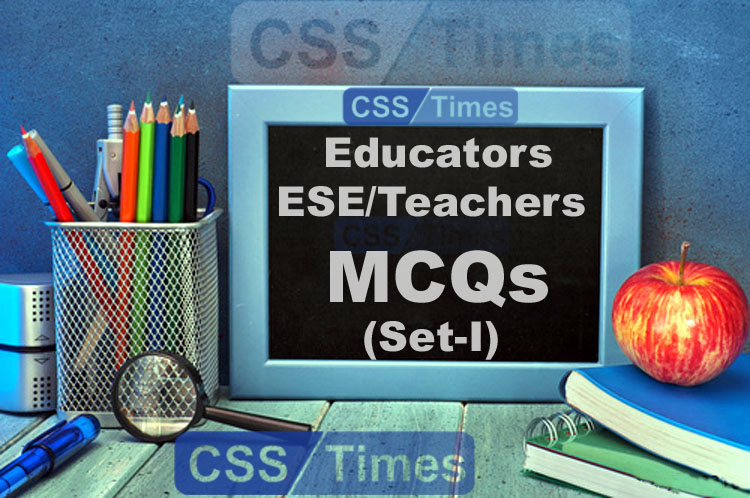

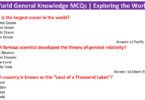
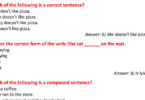
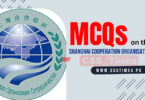
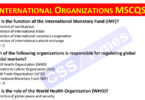

[…] Teaching Methods MCQs for the posts of Educators / ESE /… […]
[…] Teaching Methods MCQs for the posts of Educators / ESE /… […]
[…] Check Also: Teaching Methods MCQs for the posts of Educators / ESE / Teachers (Set-I) […]
[…] Check Also: Teaching Methods MCQs for the posts of Educators / ESE / Teachers (Set-I) […]